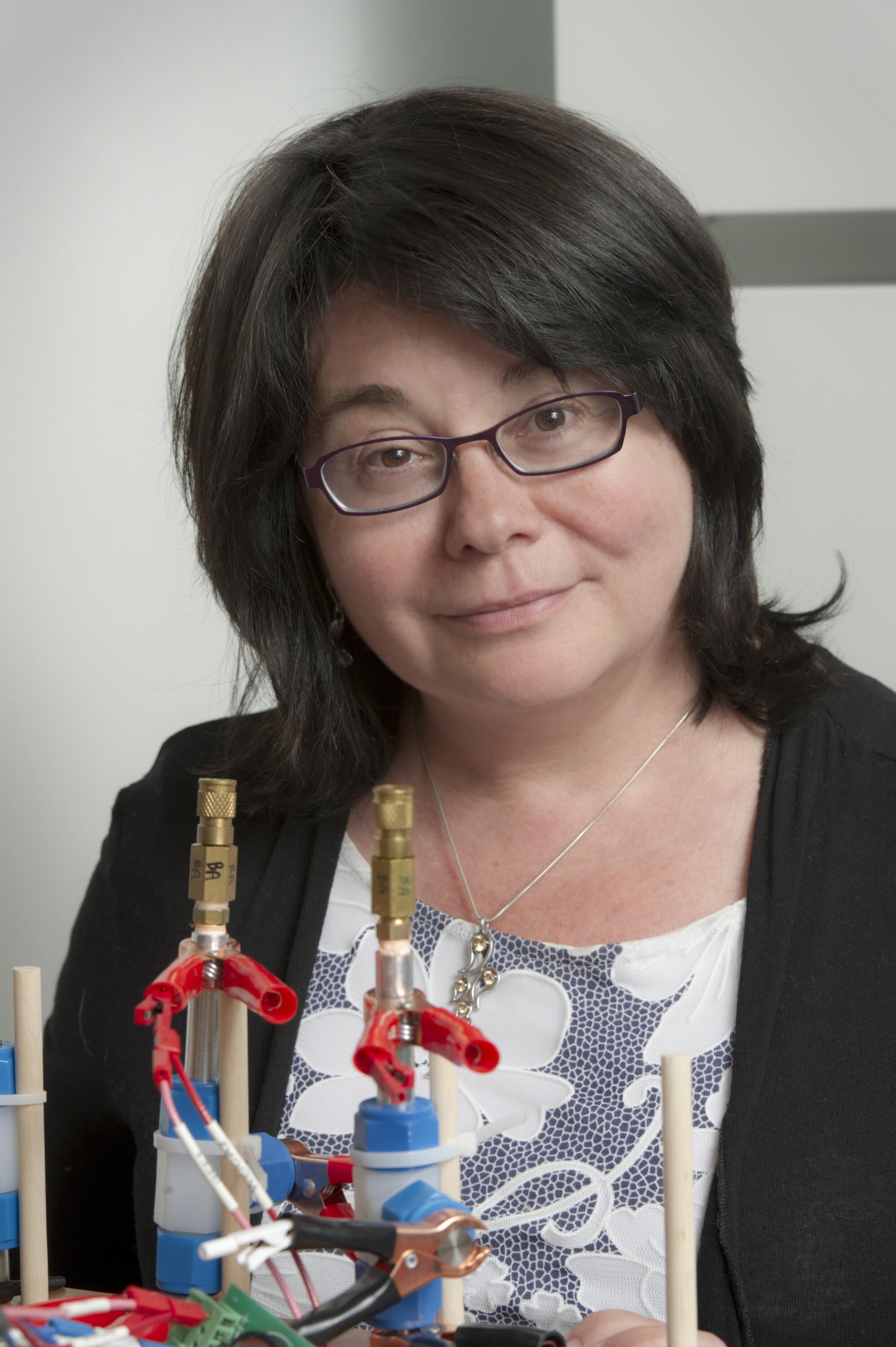
Electricity storage in batteries is in ever increasing demand for smartphones, laptops, cars and the power grid. New research shows that solid-state batteries, using solid electrolytes instead of the usual liquid organic electrolytes, are a promising replacement for today’s lithium-ion (Li-ion) batteries.
Solid-state batteries are among the most promising next-generation technologies because they offer a higher level of safety and potentially longer life. A major challenge with solid-state batteries is increasing the diffusivity of lithium-ions in the solid-state electrolyte, which is typically slower than in the liquid organic electrolytes now used in Li-ion batteries.
Linda Nazar, a professor in the Department of Chemistry, and her postdoctoral research associate, Zhizhen Zhang, worked in collaboration with JCESR, an Energy Innovation Hub led by the U.S. Department of Energy’s (DOE) Argonne National Laboratory. Waterloo Chemistry Professor Pierre-Nicholas Roy was also a collaborator on the project. Combining experimental and computational studies they found that manipulating anion dynamics (reorientation/rotation) influences cation mobility, enhancing Li-ion diffusion.
“They offer the potential of safer and longer-lasting batteries that can deliver higher energy density important to a wide variety of electrochemical energy storage applications, such as vehicles, robots, drones and more,” said Nazar. “As the most important component in solid-state batteries, the solid electrolyte largely determines its safety and cycle stability.”
An unwanted chemical reaction, called the thermal runaway reaction, has led to fires and explosions involving today’s Li-ion batteries which continue to burn until they run out of fuel. Because of these hazards, researchers seek to eliminate the internal liquid organic electrolyte by replacing it with a solid.
Very few solid-state electrolytes have ion conductivity as high as liquid organic electrolytes so Nazar and her group are speeding up the motion of lithium ions in solid-state batteries using the paddlewheel effect, which is the coordinated motion of atoms. The rotational motion of normally static negative ions (i.e., anions) in the solid-state electrolyte framework help drive the motion of the Li+ positive ions (i.e., cations) to speed up ion diffusion.
“In fact, it turns out that the anion ‘building blocks’ that comprise the solid framework are not rigid, but undergo rotational motion,” said Nazar. “Our study addresses this principle to show that anion dynamics in the framework of the solid enhance Li+ cation transport. The anion dynamics can be ‘turned on’ even at room temperature by tuning the framework, and the anion dynamics are strongly coupled to cation diffusion by the paddlewheel effect. This is somewhat akin to the transport of people through a multi-person revolving door.”
While new solid electrolytes are still in the developmental stage, the advances are encouraging. A breakthrough would be a game changer and dramatically increase the safety and deployment of Li-ion batteries.
“JCESR wants to understand the atomic and molecular level origins of battery behaviour," said George Crabtree, JCESR Director. "With this knowledge, we can build the battery from the bottom up, atom-by-atom and molecule-by-molecule, where every atom and molecule play a prescribed role in producing the targeted battery behaviour.”
Their paper, "Targeting Superionic Conductivity by Turning on Anion Rotation at Room Temperature in Fast Ion Conductors" was published in the academic journal, Matter.